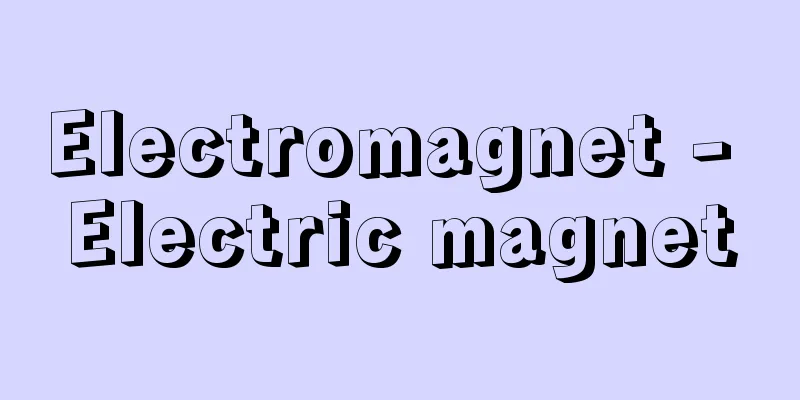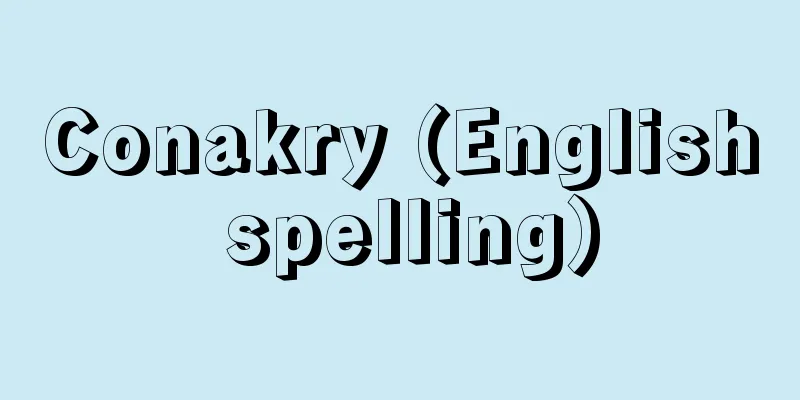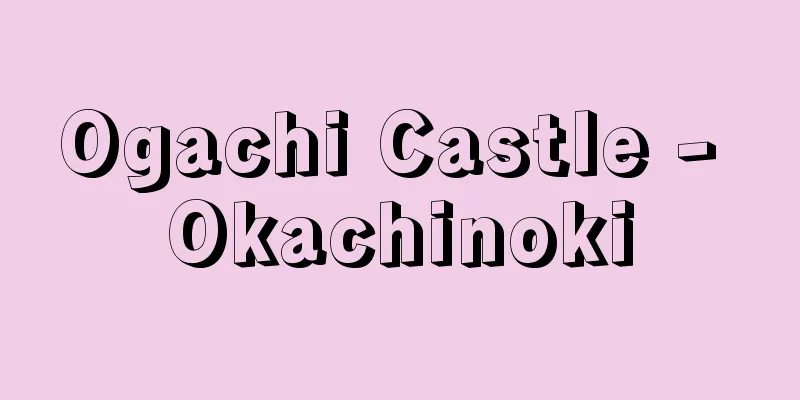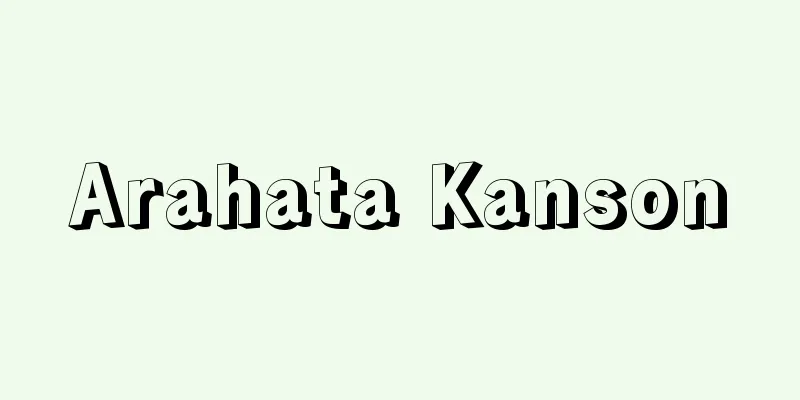Electromagnet - Electric magnet

|
A magnet that is magnetized by electric current, and is used in contrast to the term permanent magnet. Electric current creates a concentric magnetic field around the conductor through which it flows. The easiest way to generate a magnetic field based on this principle is a solenoid (a coil made of a conductor wound many times cylindrically). In this case, if the length is L, the radius is r, the number of turns per unit length is n, and the current is i, then at the midpoint of the solenoid, In addition, by creating a solenoid coil with superconducting wire, it is possible to generate a high magnetic field at liquid helium temperatures. This is called a superconducting magnet, which can also be considered a type of electromagnet. [Hiroshi Yasuoka] [Reference item] |Source: Shogakukan Encyclopedia Nipponica About Encyclopedia Nipponica Information | Legend |
|
電流によって磁化する磁石のことで、永久磁石ということばに対して使われる。電流はそれの流れる導線の周囲に同心円状の磁場をつくる。この原理に基づいて、もっとも簡単に磁場を発生できるのが、ソレノイド(導線を多数回円筒状に巻いたコイル)である。この場合、長さをL、半径をr、単位長当りの巻数をn、電流をiとすると、ソレノイドの中点では軸方向に また超伝導線でソレノイドコイルをつくることにより、液体ヘリウム温度で高磁場を発生することができる。これは超伝導磁石とよばれているが、これも電磁石の一種と考えることができる。 [安岡弘志] [参照項目] |出典 小学館 日本大百科全書(ニッポニカ)日本大百科全書(ニッポニカ)について 情報 | 凡例 |
Recommend
Free electrons
Electrons move freely in a vacuum or in a substan...
Rokushiro Uehara
Year of death: April 1, 1913 Year of birth: 1848 A...
Spongy tissue - Cavernous tissue
One of the tissues that make up the mesophyll of ...
Interleukin (IL)
A type of protein secreted by lymphocytes and macr...
Otani Kozui - Otani Kozui
The 22nd head priest of the Hongan-ji Temple of t...
Guttera edouardi (English spelling) Guttera edouardi
...The legs are strong and well developed. The fo...
Yasugawa River
A river that flows through the southeastern part ...
The Theory of Moral Sentiments
This is A. Smith's first work, published at th...
Brindisi (English spelling)
A port city and capital of the Brindisi Province i...
Local allocation tax - Chihokoufuzei
One of the local government financial adjustment ...
Social contract theory - English
A modern political thought that states that human...
Hokanji Temple
This temple is of the Rinzai sect of Buddhism, Ke...
Carex michauxiana (English spelling)
…[Tetsuo Koyama]. … *Some of the terminology that...
Kannazuki
Another name for the tenth month of the lunar cal...
Laguna de Bay (English spelling)
A lake in the southern part of Luzon, Philippines....









